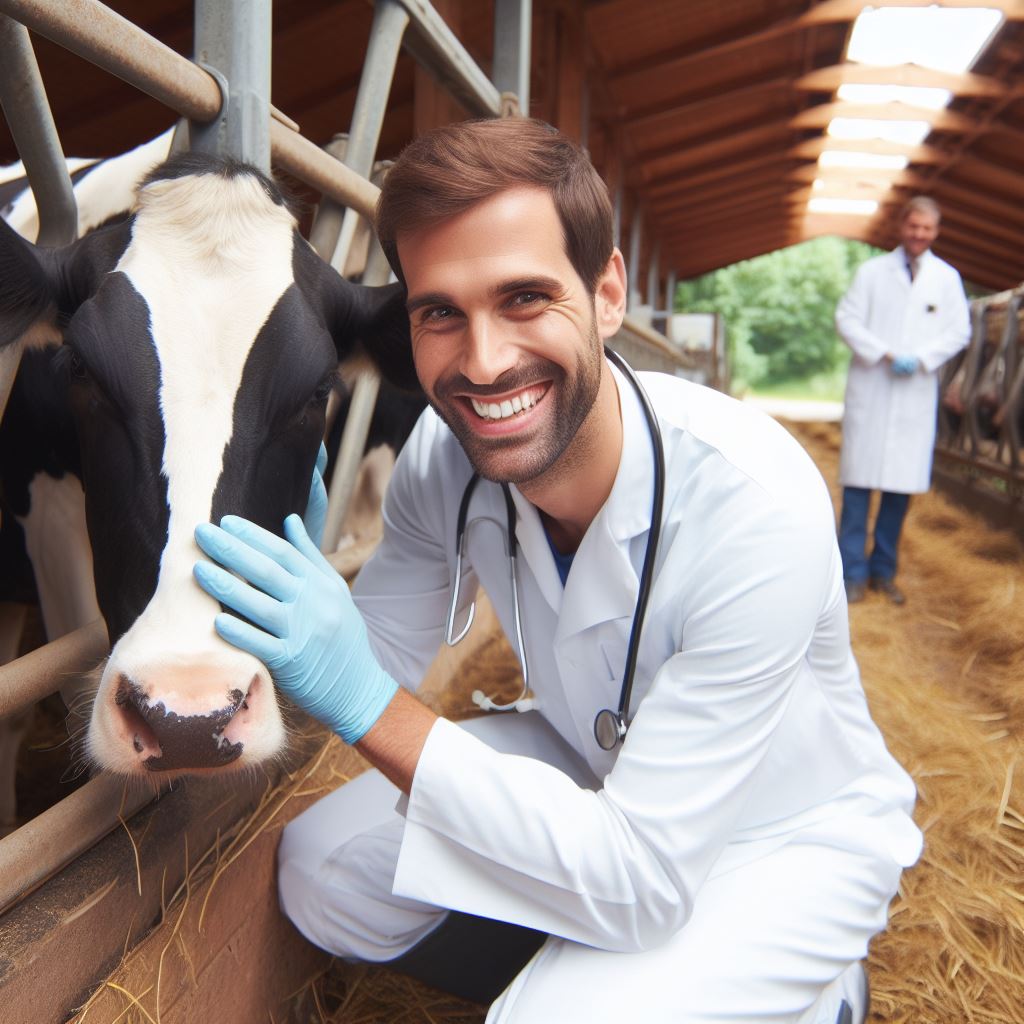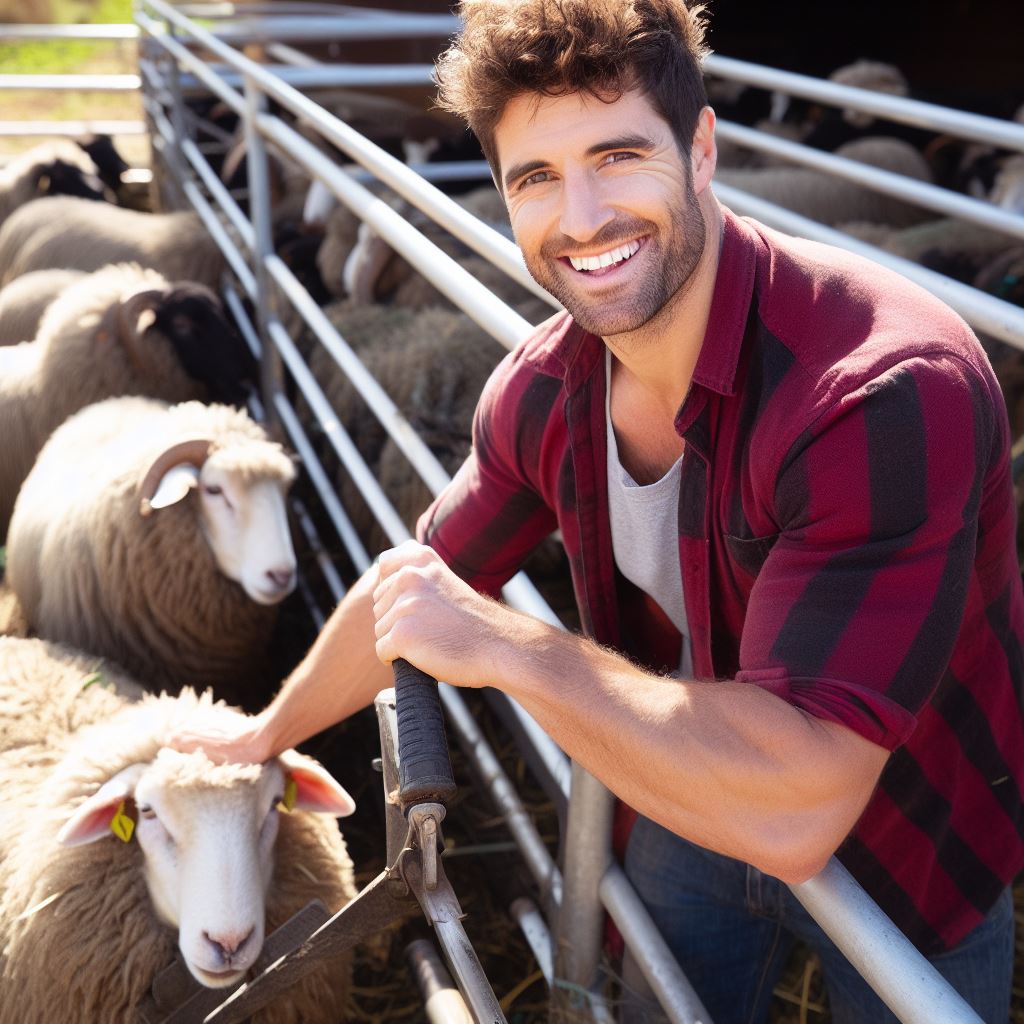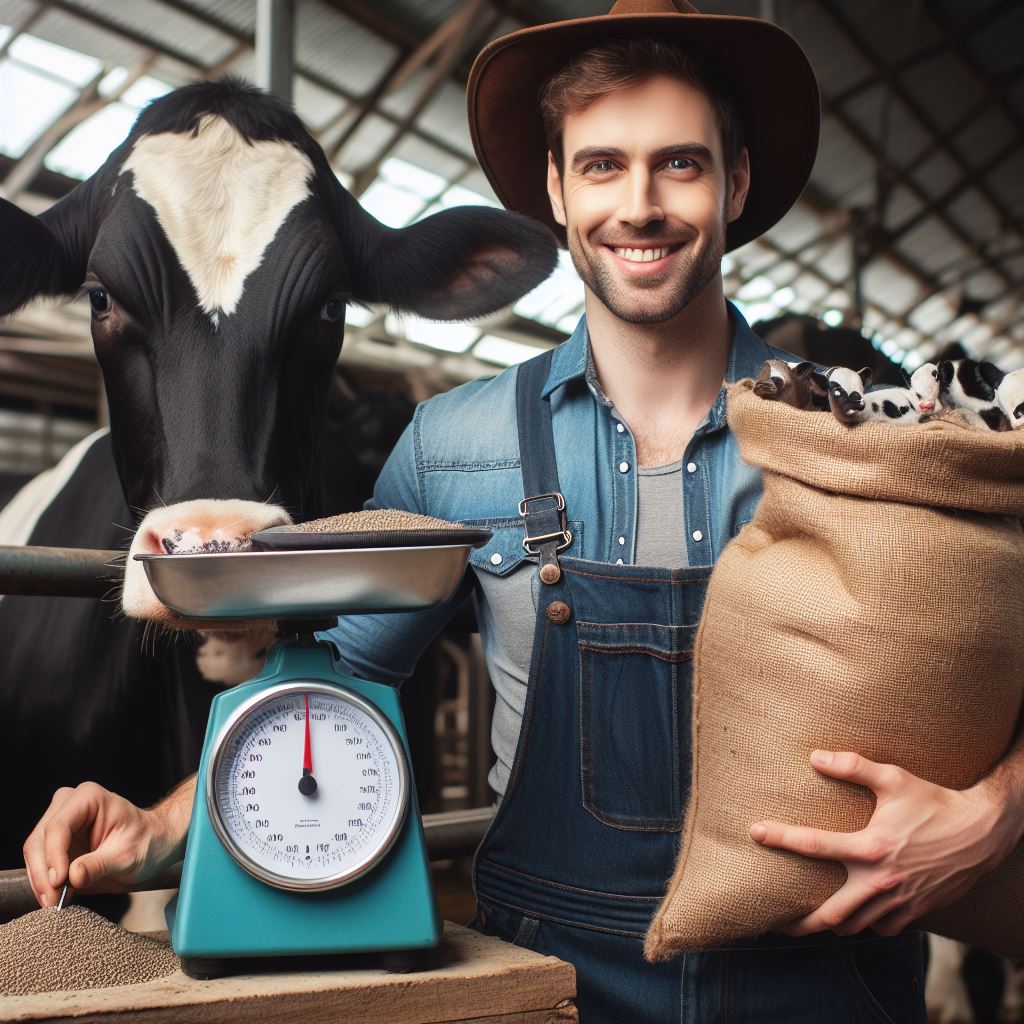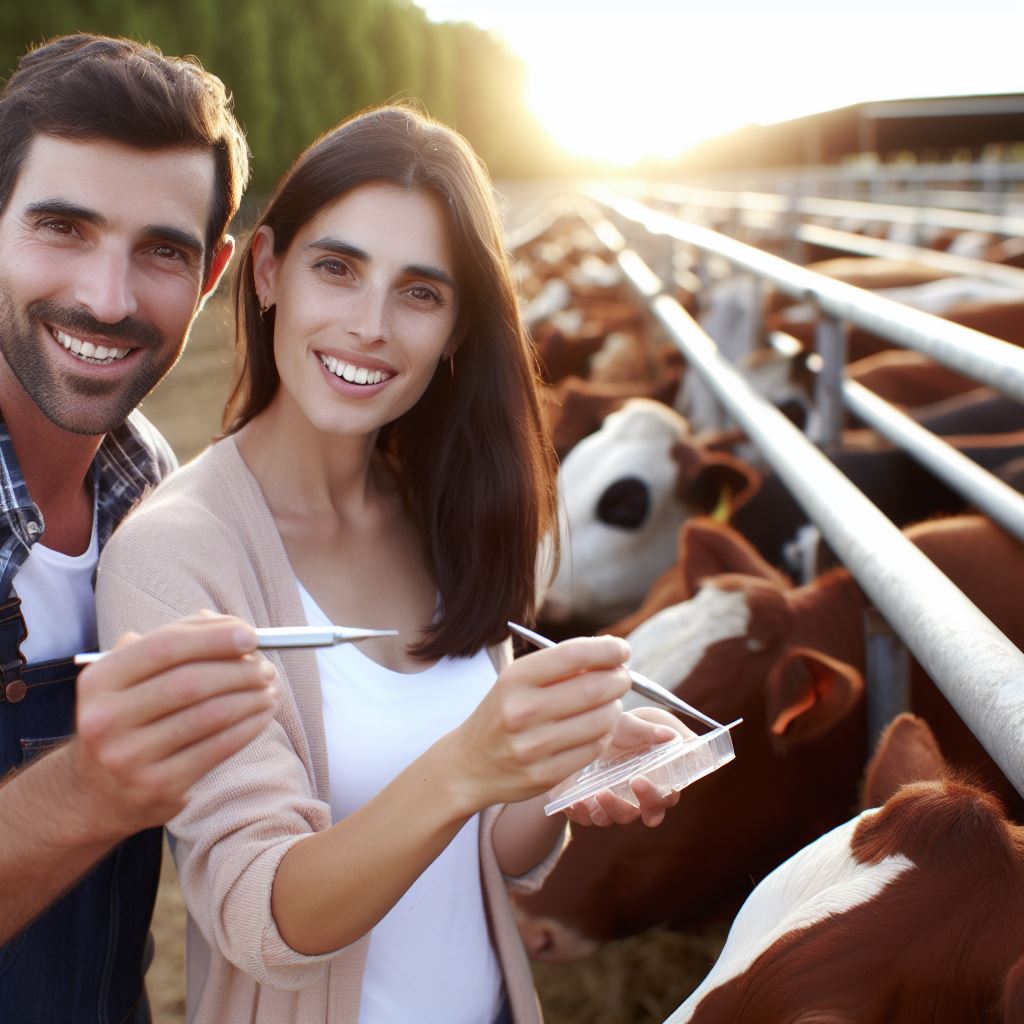Introduction
A. Importance of Livestock Disease Prevention
Livestock disease prevention is paramount for ensuring healthy animals and sustainable agriculture.
Preventing diseases not only safeguards animal welfare but also protects the livelihoods of farmers and the food supply chain.
Imagine a world where one disease outbreak can devastate entire herds. In 2020 alone, livestock diseases cost farmers globally over $20 billion. Now, picture a solution: effective prevention.
In this section, we unravel the essentials of livestock disease prevention.
From simple practices to advanced strategies, we’ll explore how proactive measures can shield your livestock from diseases, ensuring a thriving and profitable farming venture.
- Vaccination Protocols: Learn about timely vaccinations to build a robust immune system in your livestock.
- Biosecurity Measures: Discover practical steps to implement on your farm, reducing the risk of disease introduction.
- Nutrition Strategies: Explore how proper nutrition can bolster your animals’ resistance to diseases.
Let’s embark on a journey to fortify your livestock and elevate your farming practices.
Understanding Livestock Diseases
A. Common diseases that affect livestock
- Foot and Mouth Disease (FMD): Highly contagious viral infection affecting cloven-hoofed animals.
- Bovine Respiratory Disease (BRD): Common bacterial and viral infection causing pneumonia in cattle.
- Mastitis: Inflammation of udder due to bacteria, negatively impacting milk production in dairy cows.
- Avian Influenza: Viral respiratory infection prevalent in poultry, posing risks to human health.
- Brucellosis: Bacterial infection affecting various livestock species, leading to reproductive problems.
- Porcine Reproductive and Respiratory Syndrome (PRRS): Viral infection causing reproductive failure and respiratory issues in pigs.
B. Impact of diseases on livestock health and production
- Reduced productivity: Livestock diseases disrupt normal bodily functions, reducing weight gain, milk production, and egg-laying.
- Weakened immune system: Animals suffering from diseases have compromised immune systems, making them more susceptible to other infections.
- High mortality rates: Severe diseases may lead to death, resulting in a loss of valuable livestock and financial investment.
- Increased stress levels: Diseased animals experience physical discomfort, leading to stress and behavioral changes.
- Quality of products: Diseases can affect the quality of meat, milk, and eggs, impacting consumer trust and market value.
C. Economic consequences of livestock diseases
- Direct financial losses: Treating, managing, and controlling diseases incur substantial costs for farmers.
- Reduced trade opportunities: Outbreaks of diseases may lead to trade restrictions, affecting export and import of livestock products.
- Decreased production efficiency: Diseased animals require additional resources and time for recovery, reducing overall productivity.
- Higher veterinary expenses: Frequent visits from veterinarians for treatment and prevention measures increase expenses.
- Negative impact on rural economies: Livestock farming is a vital source of income for many rural communities, and disease outbreaks can disrupt their livelihoods.
In short, understanding livestock diseases is crucial for effective disease prevention and control measures.
Recognizing common diseases like Foot and Mouth Disease, Bovine Respiratory Disease, and Mastitis is essential in implementing appropriate preventive strategies.
The impact of diseases on livestock health and production, such as reduced productivity and increased mortality rates, further emphasizes the need for disease prevention.
Moreover, the economic consequences, including direct financial losses and reduced trade opportunities, highlight the significance of maintaining livestock health.
By prioritizing disease prevention, farmers can safeguard the well-being of their livestock and ensure sustainable agricultural practices.
Read: Smart Fencing Solutions for Livestock Safety
Key Principles of Livestock Disease Prevention
A. Biosecurity measures and their significance
- Implement strict biosecurity protocols to control the entry and spread of infectious agents.
- Isolate new animals before introducing them to the herd to prevent disease transmission.
- Disinfect equipment, vehicles, and facilities regularly to minimize the risk of contamination.
- Control access and limit visitors to reduce the potential introduction of pathogens.
- Train personnel on proper hygiene practices and enforce them rigorously to maintain biosecurity.
B. Vaccination and its role in disease prevention
- Administer appropriate vaccines to protect livestock from specific diseases prevalent in the area.
- Follow the recommended vaccination schedule to ensure optimal immunity and disease resistance.
- Consider the age, breed, and health status of the animals when selecting vaccines.
- Maintain accurate vaccination records for monitoring and future reference.
- Consult with a veterinarian to determine the most effective and safe vaccination protocols.
C. Proper nutrition and its impact on livestock immunity
- Provide a balanced diet that meets the nutritional needs of the specific type and age of livestock.
- Incorporate essential vitamins, minerals, and trace elements to support a robust immune system.
- Ensure access to clean water at all times to prevent dehydration and maintain overall health.
- Use high-quality feed and forage to enhance the animal’s resistance to diseases.
- Consider nutritional supplements or additives to boost the immune response in times of stress.
D. Regular veterinary care and its importance
- Establish a professional relationship with a veterinarian knowledgeable in livestock health.
- Schedule regular check-ups and preventive care to detect and address diseases early.
- Seek veterinary advice promptly if unusual symptoms or behaviors are observed in the herd.
- Implement proper parasite control measures recommended by the veterinarian.
- Follow the veterinarian’s guidance on treatment options and medication administration.
By adhering to key principles such as implementing biosecurity measures, vaccination, providing proper nutrition, and regular veterinary care, livestock owners can significantly reduce the risk of diseases.
Each principle plays a vital role in maintaining a healthy herd and preventing the devastating effects of livestock diseases.
Stay proactive in disease prevention to ensure the well-being and productivity of your livestock.
Transform Your Agribusiness
Unlock your farm's potential with expert advice tailored to your needs. Get actionable steps that drive real results.
Get StartedEffective Livestock Disease Prevention Practices
A. Quarantine protocols for new animals
- Isolate new animals for a period of time to prevent the spread of potential diseases.
- Ensure they receive a thorough health check before introducing them to the existing herd.
- Observe them for any signs of illness, such as coughing, sneezing, or unusual behavior.
- Keep them away from other animals and restrict access to their living area.
- Monitor them closely during the quarantine period and consult a veterinarian if necessary.
B. Maintaining a clean and sanitary environment
- Keep the livestock area clean by regularly removing manure and waste materials.
- Properly dispose of the waste to prevent the spread of pathogens.
- Provide adequate bedding material and ensure it is clean and dry to avoid bacterial growth.
- Regularly clean water troughs, feeders, and other equipment used by the animals.
- Implement biosecurity measures to control the entry and exit of people and vehicles.
C. Implementing proper herd management strategies
- Ensure that each animal receives proper nutrition and vaccination according to their specific needs.
- Maintain a healthy and balanced diet to boost the animal’s immune system.
- Provide enough space for each animal to reduce stress and prevent the spread of diseases.
- Separate animals of different ages to avoid the transmission of diseases from older to younger ones.
- Practice good record-keeping to track the health history of each animal and identify potential issues.
D. Monitoring and early detection of signs of illness
- Regularly observe the livestock for any changes in behavior, appetite, or physical appearance.
- Perform routine health checks involving physical examinations and temperature measurements.
- Train farm staff to recognize common symptoms of various diseases and act promptly.
- Set up a system for reporting and recording any signs of illness or abnormality.
- Consult a veterinarian immediately if any animal shows signs of illness to prevent further spread.
By following these effective livestock disease prevention practices, farmers can minimize the risk of disease outbreaks and protect the health of their animals.
Taking proactive measures can save time, money, and resources in the long run, as prevention is always better than reactive treatment.
Read: Livestock Behavior: Understanding Your Animals

Preventing Common Livestock Diseases
In order to maintain the health and well-being of your livestock, it is crucial to take preventive measures against common diseases.
By implementing these tips, you can minimize the risk of respiratory, gastrointestinal, reproductive, and external parasitic and skin diseases in your livestock.
A. Tips for preventing respiratory diseases
- Ensure proper ventilation in the livestock housing to prevent the accumulation of dust and pathogens.
- Isolate and quarantine newly arrived animals to prevent the introduction of respiratory diseases to the herd/flock.
- Practice good biosecurity measures, such as wearing clean clothing and washing hands before and after handling livestock.
- Properly vaccinate your livestock against common respiratory diseases.
- Regularly clean and disinfect water and feed containers to prevent the spread of respiratory pathogens.
B. Preventing gastrointestinal diseases
- Implement a proper nutrition program that includes a well-balanced diet for your livestock.
- Provide clean and fresh drinking water, free from contamination.
- Ensure proper access to grazing areas, avoiding overcrowding and preventing fecal contamination.
- Practice regular deworming to control internal parasites that can cause gastrointestinal diseases.
- Maintain good hygiene by regularly cleaning and disinfecting feeding and watering equipment.
C. Measures to prevent reproductive diseases
- Establish a strict breeding program to control and prevent the spread of reproductive diseases.
- Ensure proper nutrition for breeding animals, including sufficient minerals and vitamins.
- Regularly monitor and maintain appropriate body condition scores for breeding animals.
- Practice proper hygiene during artificial insemination and other reproductive procedures.
- Implement quarantine measures for newly acquired or returning breeding animals to avoid introducing diseases.
D. Preventing external parasites and skin diseases
- Trim excessive hair or wool to reduce the risk of external parasite infestations.
- Practice regular grooming and inspection of livestock to detect and treat external parasites early.
- Keep the animal housing area clean and dry, as dampness can increase the risk of skin diseases.
- Regularly clean and disinfect any equipment used for grooming or handling livestock.
- Implement measures such as fly control and proper sanitation to reduce the risk of skin diseases.
By following these preventive measures, you can significantly reduce the occurrence of common livestock diseases and ensure the overall health and productivity of your herd or flock.
Read: Effective Dairy Farming: Yield Maximizing Tips
The Role of Education and Collaboration
A. The importance of farmer education on disease prevention
- Continuous education empowers farmers to identify and mitigate disease risks in livestock.
- Proper knowledge of biosecurity measures reduces the likelihood of disease outbreaks.
- Training programs equip farmers with skills to effectively implement preventive measures.
- Well-informed farmers can make informed decisions regarding vaccination and treatment strategies.
- Educational resources, such as workshops and online courses, provide valuable disease prevention information.
B. Encouraging collaboration with veterinarians and experts
- Veterinarians play a crucial role in disease prevention through regular herd health checkups.
- Collaborating with experts allows farmers to gain insights and access to updated disease control methods.
- Veterinarians provide guidance and aid in the development of effective livestock health management plans.
- Consulting professionals can lead to early disease detection and prompt intervention.
- Collaboration ensures a multidisciplinary approach to disease prevention and control.
C. Benefits of participating in local or national disease prevention programs
- Participation in disease prevention programs increases awareness and promotes best practices.
- Access to government-funded initiatives often aids in disease testing, monitoring, and research.
- Such programs foster networking among farmers, veterinarians, and researchers.
- Sharing experiences and knowledge in prevention programs strengthens the collective fight against diseases.
- Programs foster governmental support, leading to better infrastructure and disease surveillance systems.
Farmers should prioritize ongoing education to upgrade their knowledge and skills in disease prevention.
By staying informed about current practices and advancements, farmers can proactively safeguard their livestock against diseases.
Collaboration with veterinarians and experts not only enhances disease prevention measures but also ensures early detection and proper management.
Additionally, participating in local or national disease prevention programs offers numerous benefits, including increased awareness, access to resources, and networking opportunities.
Together, education and collaboration serve as vital components in achieving effective livestock disease prevention and control.
Read: Horse Care Essentials: A Comprehensive Guide
Discover More: Cost-Effective Feeding Systems for Small Farms
Conclusion
This blog post has covered several key points regarding livestock disease prevention.
Livestock disease prevention is of utmost importance as it directly impacts the overall health and profitability of a farm.
By implementing the tips mentioned in this blog post, farmers can minimize the risk of disease outbreaks and protect their livestock.
Regular vaccinations, proper nutrition, and maintaining good hygiene practices are essential for preventing the spread of diseases among livestock.
Timely identification and isolation of sick animals, as well as consulting with veterinarians, are crucial in preventing disease transmission.
Ensuring biosecurity measures, such as controlling visitors’ access and practicing strict quarantine protocols, can significantly reduce the risk of disease introduction to the farm.
It is also important to regularly monitor livestock health, be aware of disease symptoms, and take prompt action to prevent further spread in case of an outbreak.
Overall, livestock disease prevention plays a vital role in sustaining farm operations, protecting animal welfare, and maintaining profitability in the long run.




